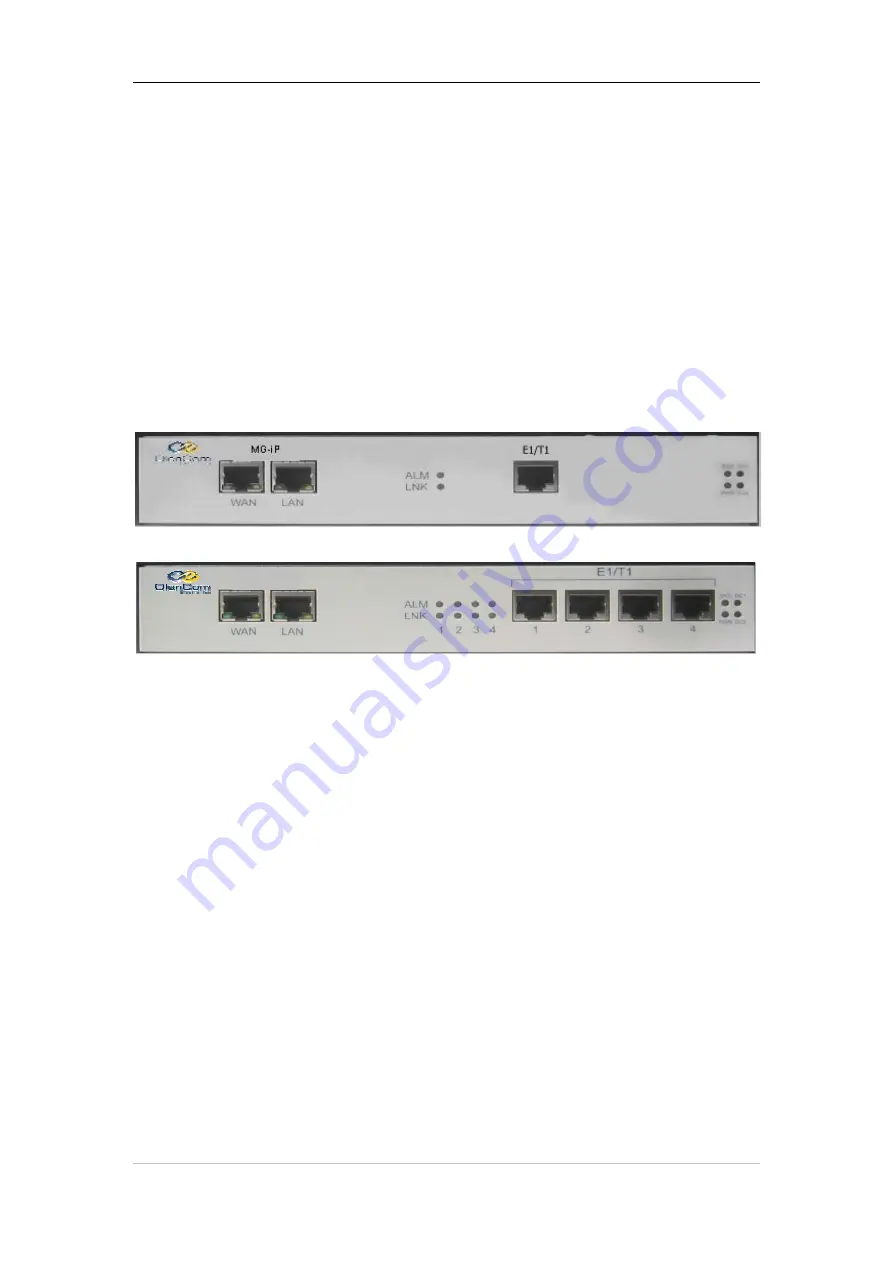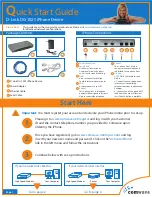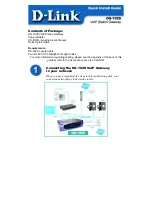
MG-IP TDM Over IP Gateway Reference Manual
23
•
LAN/Management Port – for out-of-band management, and bandwidth control LAN interface.
•
One or Four T1/E1 interface.
•
One console interface.
•
One External Clock interface.
•
One power jack, either AC (external power adapter) or DC single/redundant (Block Terminal)
The MG-IP has a built-in T1/E1 framer/LIU. The T1/E1 interface can be connected to standard T1/E1
equipment via the external connectors.
The MG-IP multiplexes the LAN Ethernet traffic and the pseudowire for transmission to the WAN.
The traffic is transmitted so that the pseudowire has priority over forwarded LAN traffic (default
priority is 0x5). The maximum bandwidth of the LAN and the WAN interfaces are configurable to
support limited bandwidth applications. Pseudowire and other traffic received on the WAN interface is
demultiplexed and output through the LAN interface and the T1/E1 interface. Certain data packets,
such as management packets, are processed locally on the MG-IP, and therefore are not forwarded to
other interfaces.
Figure 17: MG-IP-1 Interfaces
Figure 18: MG-IP-4 Interfaces
MG-iP
IP Address Configuration
MG-IP units offer three options for configuring IP addresses for the two Ethernet ports (WAN,
LAN/Management (located on the rear side):
Static IP address: (This is the factory default setting
) the user defines the IP address for
each port. The IP address can be
The same value for both ports
Different values if the ports are on different sub-nets, and for out of band management
TCP/IP Disabled
: The port does not support IP traffic at all. This will be the case, for
example, when using CESoETH headers on pseudowire streams.
IP configured Dynamically
: The IP address for a port is configured dynamically at power up
using a DHCP client. At power on, the embedded DHCP client sends a request for an IP
address and default gateway for each dynamically configured port. TDM traffic will not start
to flow until IP addresses are received for the dynamically configured ports. The user must
ensure that there is a DHCP server available to respond to the DHCP client request for an IP
address.
Each Ethernet port can be configured independently, using the sic command line interface (CLI)
command. This command selects the option and sets the IP address and sub-net mask if the static IP
option was chosen.
The “set default gateway” CLI command is effective only if the static option was chosen.
















































